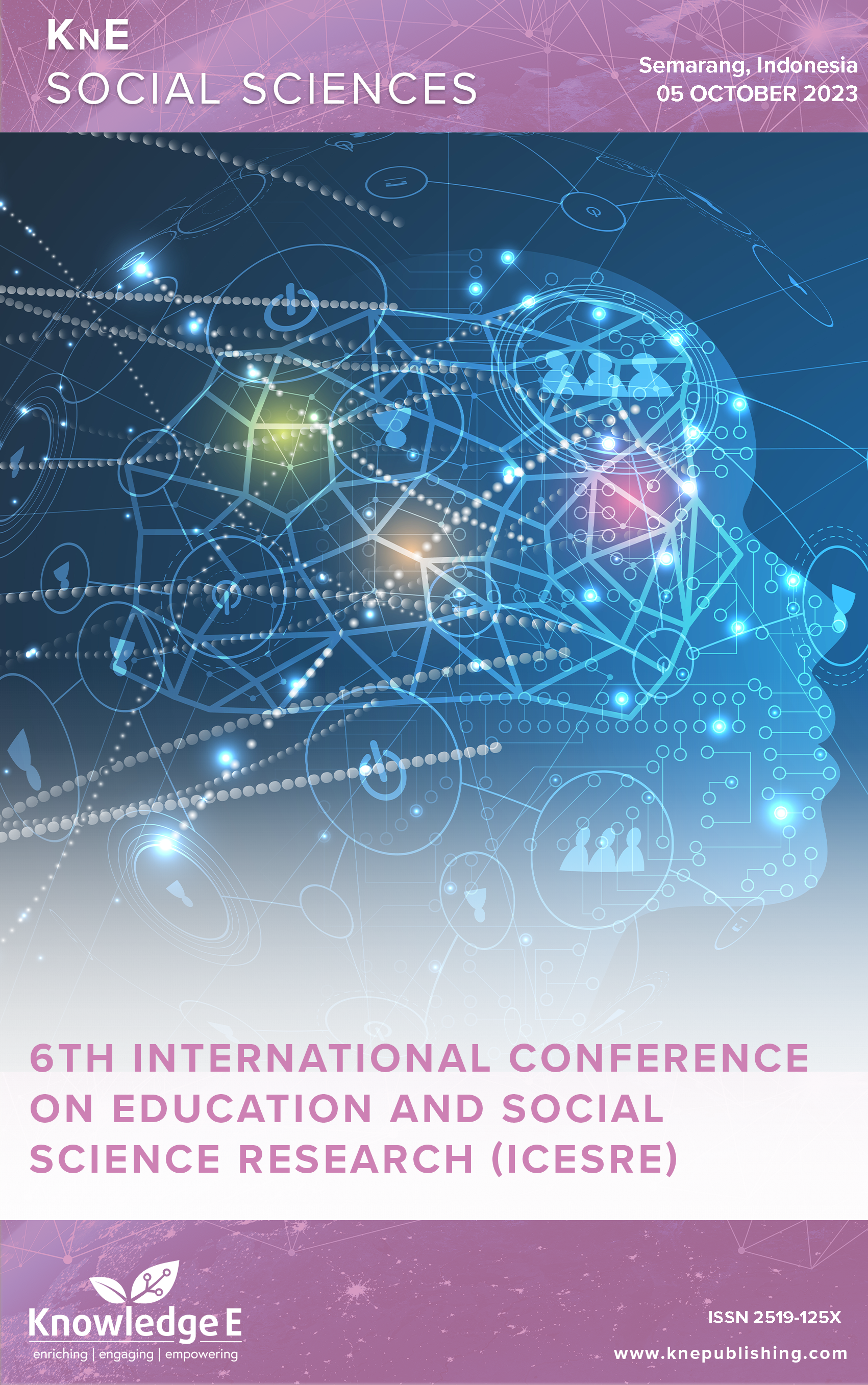Problem-solving Strategy: Mathematical Problem-solving Model Within the Polya' Framework
DOI:
https://doi.org/10.18502/kss.v9i6.15327Abstract
Mathematical problem-solving is very important for students to learn and understand, which can later be used in solving problems that exist in everyday life. This study aims to analyze the mathematical problem-solving model within the framework of Polya’ theory. The subjects in this study were fifth grade students showing their strategy to solve mathematical problem. We analyzed the student’ problem-solving strategy with real word problems and configured their solution. The results of this study are in the problem-solving process, the subject has completed according to the stages of Polya. At each step, the indicators work together in a unique way to solve a math problem. This research initiates that the connection between indicators in problem-solving can form a cycle of resolution.
Keywords: problem solving, mathematical problems, mathematics ability
References
Silver EA. Teaching and learning mathematical problem solving: Multiple research perspectives. Teach Learn Math Probl Solving Mult Res Perspect 2013:1–469. https://doi.org/10.4324/9780203063545. DOI: https://doi.org/10.4324/9780203063545
Kholid MN, Imawati A, Swastika A, Maharani S, Pradana LN. How are Students’ Conceptual Understanding for Solving Mathematical Problem? J Phys Conf Ser 2021;1776:012018. https://doi.org/10.1088/1742-6596/1776/1/012018. DOI: https://doi.org/10.1088/1742-6596/1776/1/012018
Balakrishnan B. Exploring the impact of design thinking tool among design undergraduates: a study on creative skills and motivation to think creatively. Int J Technol Des Educ 2021. https://doi.org/10.1007/s10798-021-09652-y. DOI: https://doi.org/10.1007/s10798-021-09652-y
Schoevers EM, Kroesbergen EH, Leseman PPM. Enriching mathematics education with visual arts: effects on elementary school students’ ability in geometry and visual arts. Int J Sci Math Educ 2019. DOI: https://doi.org/10.1007/s10763-019-10018-z
Sumirattana S, Makanong A, Thipkong S. Using realistic mathematics education and the DAPIC problem-solving process to enhance secondary school students ’ mathematical literacy. Kasetsart J Soc Sci 2017;38:307–15. https://doi.org/10.1016/j.kjss.2016.06.001. DOI: https://doi.org/10.1016/j.kjss.2016.06.001
Leung A. Exploring STEM Pedagogy in the Mathematics Classroom: a Tool- Based Experiment Lesson on Estimation. Int J Sci Math Educ 2019;17:1339–58. https://doi.org/10.1007/s10763-018-9924-9. DOI: https://doi.org/10.1007/s10763-018-9924-9
NCTM. Learning to Think Spatially. Washington, D.C.: The National Academies Press; 2006. https://doi.org/10.17226/11019. DOI: https://doi.org/10.17226/11019
Polya G. How To Solve It: A new Aspect of Mathematical Method. New Jersey: Princeton University Press; 1973.
Nite S. Using Polya ’ S Problem Solving Process In The Mathematics Classroom. In: Allen GD, Ross A, editors. Pedagog. Content Middle High Sch. Math., Sense Publishers; 2017, p. 233–5. DOI: https://doi.org/10.1007/978-94-6351-137-7_51
Hensberry KKR, Jacobbe T. The effects of Polya ’ s heuristic and diary writing on children ’ s problem solving 2012:59–85. https://doi.org/10.1007/s13394-012-0034-7. DOI: https://doi.org/10.1007/s13394-012-0034-7
Shirali SA, George P. George Pólya & Problem Solving ... An Appreciation 2014:310– 22. DOI: https://doi.org/10.1007/s12045-014-0037-7
Fan L, Zhu Y. Representation of problem-solving procedures: A comparative look at China, Singapore, and US mathematics textbooks. Educ Stud Math 2007;66:61–75. https://doi.org/10.1007/S10649-006-9069-6/METRICS. DOI: https://doi.org/10.1007/s10649-006-9069-6
Wahyu K, Kuzu TE, Subarinah S, Ratnasari D, Mahfudy S. Partitive fraction division: Revealing and promoting primary students’ understanding. J Math Educ 2020;11:237–58. https://doi.org/10.22342/jme.11.2.11062.237-258. DOI: https://doi.org/10.22342/jme.11.2.11062.237-258
Schoenfeld AH. Mathematical practices, in theory and practice. ZDM - Math Educ 2020;52:1163–75. https://doi.org/10.1007/S11858-020-01162-W/METRICS. DOI: https://doi.org/10.1007/s11858-020-01162-w
Bingolbali F, Bingolbali E. One curriculum and two textbooks: opportunity to learn in terms of mathematical problem solving. Math Educ Res J 2019;31:237–57. https://doi.org/10.1007/S13394-018-0250-X/METRICS. DOI: https://doi.org/10.1007/s13394-018-0250-x
Indrianti. Developing Student-Centered Grammar Materials for Beginners’ Level Indonesian 2012:22.
Leong YH, Tay EG, Toh TL, Quek KS, Yap RAS. Concretisations: a Support for Teachers to Carry Out Instructional Innovations in the Mathematics Classroom. Int J Sci Math Educ 2019;17:365–84. https://doi.org/10.1007/S10763-017-9868-5/METRICS. DOI: https://doi.org/10.1007/s10763-017-9868-5
Koichu B, Parasha R, Tabach M. Who-Is-Right tasks as a means for supporting collective looking-back practices. ZDM - Math Educ 2021;53:831–46. https://doi.org/10.1007/S11858-021-01264-Z/FIGURES/5. DOI: https://doi.org/10.1007/s11858-021-01264-z
Leong YH, Dindyal J, Toh TL, Quek KS, Tay EG, Lou ST. Teacher preparation for a problem-solving curriculum in Singapore. ZDM - Int J Math Educ 2011;43:819–31. https://doi.org/10.1007/S11858-011-0356-Z/METRICS. DOI: https://doi.org/10.1007/s11858-011-0356-z
Kiliç Ç. Pre-Service Primary Teachers’ Free Problem-Posing Performances in the Context of Fractions: An Example from Turkey. Asia-Pacific Educ Res 2013;22:677– 86. https://doi.org/10.1007/s40299-013-0073-1. DOI: https://doi.org/10.1007/s40299-013-0073-1

